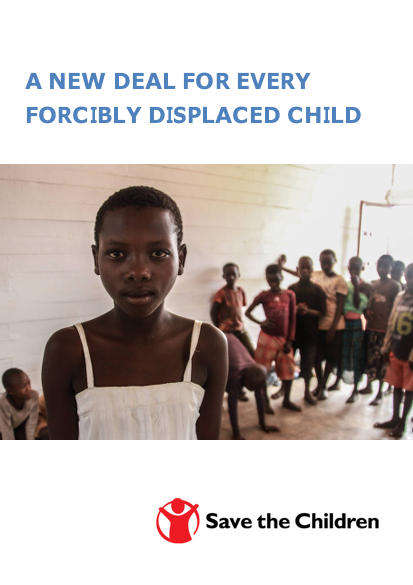
Introduction Nearly 250 million children live in regions affected by conflict. In all parts of the world the number of refugees, internally displaced people and asylum seekers are on the rise as a result of violence and persecution,2 and the total number is now higher than at any time since the end of the Second World War. More than half of the world’s 60 million displaced people are under the age of 18.3 Once they have been displaced for six months, a refugee is likely to remain displaced for at least three years, with the average length of displacement now estimated at 17 years – almost an entire childhood.4 Far too many displaced children face formidable barriers to accessing even the most basic services, including education, protection and healthcare, and in meeting their day-to-day food or shelter needs. Inequalities based on gender, sexual orientation, disability and ethnicity further exacerbate these barriers. Education is critical for all children, but it is especially urgent for the millions of girls and boys forced to flee their homes in humanitarian crises. For the majority of displaced children, their right to education is a largely unfulfilled promise.
In addition, a third of the 10 million stateless people worldwide are children who are unable to claim rights, protection, education, social protection and healthcare.5 Displacement thus not only creates immediate threats to children’s protection and wellbeing, but also often does irreparable damage to their future life chances. The immediate and long-term consequences for these children – and for their communities – can be devastating.
In this briefing we present four areas of commitment for forcibly displaced children which Save the Children is calling for at the World Humanitarian Summit and beyond:
- Guarantee an education for every displaced child
- Ensure protection for all displaced children
- Offer long-term solutions to protracted displacement
- Uphold existing rules and standards Throughout this briefing we indicate how the recommendations in these four areas link with the proposed Core Commitments laid out by the World Humanitarian Summit Secretariat for the High Level Leaders’ Roundtable named Leaving No One Behind: A Commitment to Address Forced Displacement (hereinafter “Core Commitments”).14 Save the Children will outline its own institutional commitments in a separate document and through the highest level of representation at the Summit.